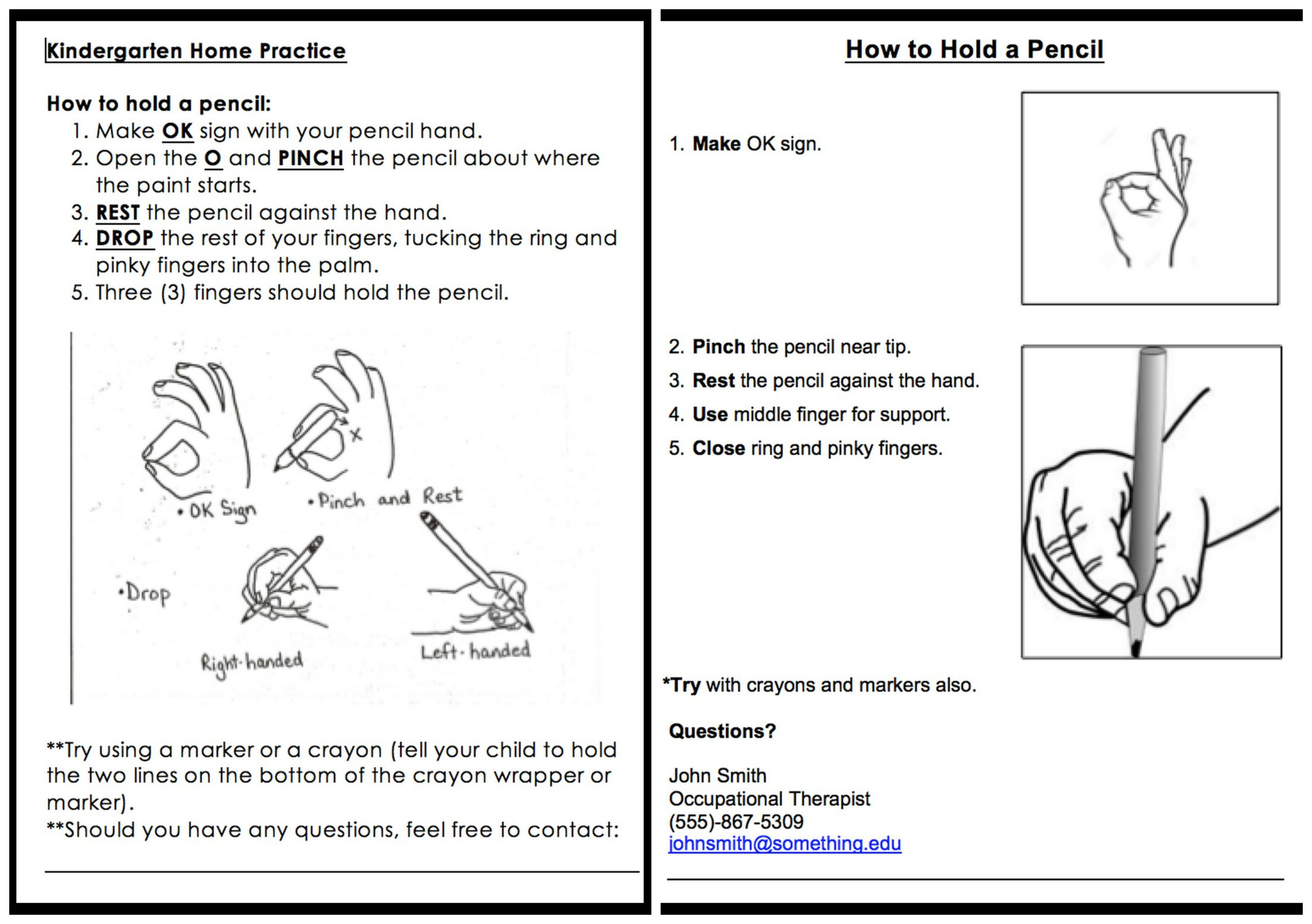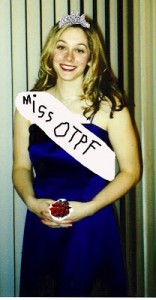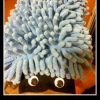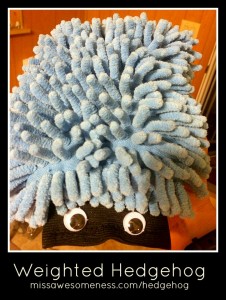Let's hope this man isn't an OT
I cracked up at the screen shot below. It was a Reddit.com thread about methods to get up in the morning. Redditors are notoriously snarky. I loved the bolded box below. The man’s suggestion was to "place your alarm over a pit of lava filled with lava dwelling snakes who like to jump to get their prey." Yes, that would certainly wake a person up. OTs can work with sleep hygiene although most of us don’t take it quite that far. 🙂
PS: I recommend going to Reddit and checking the "Ask Reddit" section because they have some pretty incredible topics, some of which may be helpful to occupational therapists.
Health literacy and educational hand-outs
Educational handouts to clients should rarely be above an 8th grade level, and often more like 4th grade. Here is a "before" and "after" of a handout that some of my classmates and I modified in our Education in OT course!
Four of us modified it in a small group assignment. We all just got back from our once-a-semester 3-4 day onsite visit at the Rocky Mountain University of Health Professions campus, based in Provo, Utah.
*I’m getting my post-professional clinical doctorate in occupational therapy through their program, which is mostly online. I find the curriculum rigorous yet reasonable, and the professors awesomely hysterical yet wonderfully knowledgeable and helpful. I’m really enjoying it as a form of vocational rehabilitation, opening new and non-traditional doors for me, so that I can be a successful occupational therapist even if I can’t handle daily regular direct service sessions!
Remembering our upbringings affect our expectations of clients
Just thinking out loud/reflecting here. 🙂 I really enjoyed reading the following Facebook post by F.C. on the group page, “Pediatric Occupational Therapists”. (I recommend joining this group, a lot of high-quality information and resources.) I enjoy outside-the-box thinking and creativity, and at times I felt guilty trying to reconcile my work with some of the more rigid academic necessities. I did have a typical schooling so I understand “normal” expectations, but I think more like F.C.!
“I went to a very small alternative school from 1st grade through high school that really emphasized individuality and creativity. It was a wonderful place to be and we learned a lot of great life skills, but there was no OT and no one was too concerned with typical development. Fast forward 20 years and I am at my first fieldwork placement at a peds clinic, working with a little boy who was coloring. He was having a great time and using a bunch of different colors and free form drawing before he filled in the shapes… My supervisor (who is lovely) walked in and called him out on not coloring properly – oops! I had no idea up to that point (as a 30 year old) that coloring is usually supposed to be one color, fill the whole area systematically, etc. I thought this kid was doing great! It was an interesting reminder that my upbringing is always going to affect the way I see things and the way I treat. I’m still not sure of everything kids are “supposed” to be doing at certain ages, except out of text books, which don’t give us much.”
Controversy: Patient versus Client versus Consumer?
Patient, Client, or Consumer? In occupational therapy and other healthcare fields, there is a semantic controversy over what us therapists/the public should be calling those who utilize occupational therapy services. Depending on the label used, we get a different feel for the relationship between therapist/person.
My friend, a psychologist, told me she likes to use the word “patient” because it came from Latin and means “one who suffers,” and she feels the people who see her are there because they are suffering. Some therapists prefer “client” as they feel “patient” has more of a superior-inferior feel, as well as a “medical model” feel, and many OTs feel we need to be more encompassing. Other therapists prefer “consumer” because it seems to have a more neutral connotation. I’m sure there are plenty of other reasons for the different labels. Some therapists feel very passionately about the “appropriate” label, others don’t really care, others use them interchangeably. I think there may be an even better label out there. Hmm. So I just asked my pediatric therapist friend what she calls the people she sees, and she said with a shrug, “child.” I loved that answer! Maybe that’s the best one of all. 🙂
What do you think? Patient, client, or consumer?
Remembering our patients in a larger context
As an occupational therapist who has worked in physical dysfunction, this picture of a senior woman in a hospital, cuddling a cat, really struck me. It’s a reminder that our patients, often seen in a hospital setting with no external context, are real people, with real stories, and real lives. Never forget.
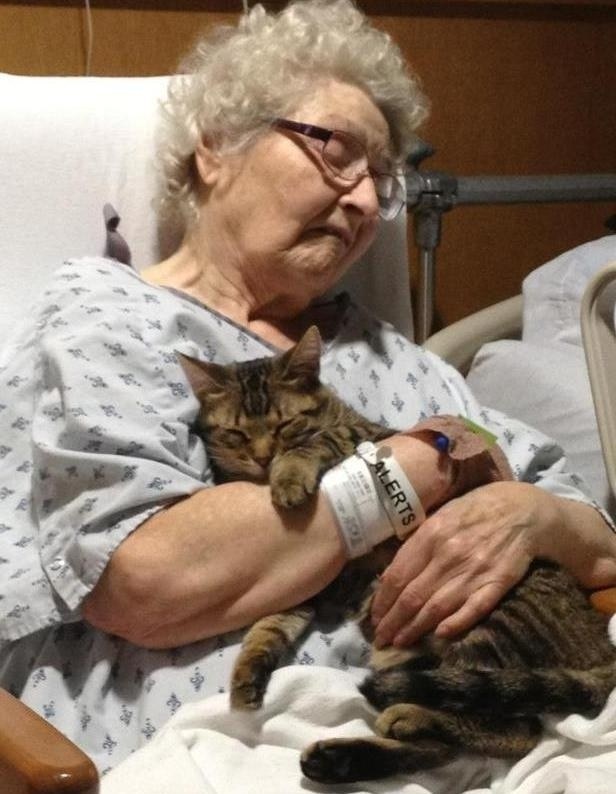
*Picture came off some random site a long time ago – no idea where.
The Life Lemonade Resume: Making those Lemons Palatable
What makes you, you? We all have our unique stories, our life of accumulated events that define us. Sometimes it’s hard to look on the bright side when life hands us lemons, especially when Life shops at Costco. I’ve kept a “life resume” for years, and many of its entries come from life-lemonade events.
For example, have you…Ruined an iron by permanently branding it with a platypus?
Saved a dying angelfish in your aquarium using only a long breadstick?
Been followed home by a former client in an airplane?
Been burned by a crystal ball?
Broken your toe on a rock while hula hoop dancing at the beach? [Just happened last week. Ow.]
Given yourself a black eye with an ice cream scoop?
Nearly strangled yourself to death with hula hoops in a parked car?
Been bruised by a gallon of green juice bouncing off your shin?
No? Because I have. Stories like this make me “me,” they give me my occupational identity. When that gallon of juice bounces off my shin, my first thought is OW, that sucked. But my second thought is haha, another entry for my life resume. Bet not many other people can say juice bounced off their shin. Another “this is the unique story of Karen” moment.
Think about yourself, think about your clients. Do you have any that can see the humor or uniqueness in their stories, especially the smaller, day-to-day ones? Do you think you could compile your own life resume? You can make one that includes all the life basics – places you’ve been, people you’ve met, special events, pets, scars, etc. Add in life lemonade – and life awesome-ade – as it comes! It can be little – if you get creative, you could probably have daily entries.
With this reflective approach, we “aid” our lemon events in becoming more palatable. We recognize that each event is a contributor to our unique occupational identity, rather than a detractor. And we can laugh about a lot of them! Laughter is the most natural sweetener there is…truly a way to make lemonade.
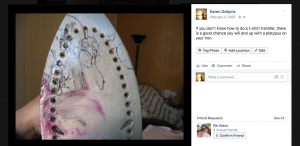
Framework-III for OT Students/Practitioners, Cheatsheet
The newly updated Occupational Therapy Practice Framework: Domain and process, 3rd edition, otherwise known as the Framework-III is an important document provided by the American Occupational Therapy Association, and all therapists and students should be intimately familiar with it. Figuratively. Only figuratively. I have slept with it though. Literally, in OT school, I fell asleep with the first edition more than once. That’s why they called me Miss OTPF. We had a Miss OTPF pageant too, but the opposite of occupation-based in true parody style! Anyway. Moving on. Now that I am back in school for my post-professional clinical doctorate in occupational therapy (OTD), the Framework-III and I are once again sharing a pillow, and I’m putting my crown back on, deserved or not.
The true framework is quite long, so this just gives you a cheatsheet taste of categories/terminology. Here’s a 1- page PDF of this outline of the Framework-III. FrameworkOutline.pdf
Occupational Therapy Practice Framework: Domain and Process, 3rd ed., (abbreviated/referred to as Framework-III)
An official document provided by AOTA, summarizing occupational therapy’s unique approach to healthcare. Our domain focuses on “achieving health, well-being, and participation in life through engagement in occupation,” through a vision of “occupation based, client centered, contextual, and evidence based” care.
OTs must evaluate a client holistically and deductively with an “occupational profile”, using below categories as guidelines, before determining intervention approach.
Clients can refer to persons, groups, and populations [newly expanded definition]
Occupations (meaningful life activities that clients engage in)
- Activities of Daily Living (ADL) – (personal hygiene, bathing, sexual activity, etc.)
- Instrumental Activities of Daily Living (IADL) (care of others, community mobility, financial management, shopping, safety, etc.)
- Rest and Sleep, Education, Work, Play, Leisure, and Social Participation
Client Factors (reside within client and influence client’s performance in occupations)
- Body Functions, Body Structures, Values, beliefs, and spirituality
Performance Skills (observable actions with a functional purpose)
- Motor skills (observed physical interactions, i.e. reaching, bending, manipulating)
- Process skills (observed “executive functioning” during a task, i.e. initiating, sequencing, gathering, problem-solving)
- Social interaction skills (observed during social interactions, i.e. transitions, gesticulations)
Performance patterns (behaviors related to activities of daily life)
- Habits, Routines, Rituals, Roles
Context (environmental conditions that may affect client’s performance)
- Cultural, personal, physical, social, temporal, virtual
*Please see reference for comprehensive details in each area. Use this brief handout at your own risk!
Example of citation in-text: We used the Occupational Therapy Practice Framework: Domain and Process, 3rd ed., ([Framework-III], AOTA, 2014) for our project. The Framework-III (AOTA, 2014) is awesome.
Reference: American Occupational Therapy Association. (2014). Occupational therapy practice framework: Domain and process (3rd ed.). American Journal of Occupational Therapy, 68(Suppl. 1), S1-S48.
Weighted Hedgehog: OT Sensory Tool
This weighted hedgehog is so simple to make. A sensory tool you can make extremely quickly and for less than $10.
Materials:
1. Car-wash-mitten (often found in CVS $1-4 section or dollar store).
2. Eyeballs (If the sleeve isn’t black, you can Sharpie them).
3. Beans/rice/whatever weighted item you want, double-zipped in high-quality zip-lock.
How to Make:
1. Stick the ziplocked weighted material into the mitten.
2. Put on eyeballs!
3. Sew shut the mouth, or if you are sewing-challenged like me, I first used velcro until a friend helped me out. It only takes a minute or two.
Uses:
Have the hedgehog sit on their laps or by their side. Stroke the textured surface and feel the (mild) calming weight. I can see this being nice for a child who is resting and wanting to touch something. It’s a sensory tool, tactile with texture and proprioceptive with weight.
You could probably also throw it as a form of ball with older children who can handle weight being thrown, to make it more sensory-motor!
*It can be a choking hazard if taken apart, or potential suffocation hazard. Please supervise if used with younger children.
Want to print it/download the PDF of this? Weighted Hedgehog Making
OT Invention Munchy Balls: Fine Motor/Sensory Motor Play
Occupational Therapist Tonya of TherapyFunZone.com invented this awesome toy. You can check it out here and buy it in her online store.She has quite a few posts with ideas on how to use it, including messy sensory play and kinetic sand. I also included a few pictures of it being naughty. 🙂 I’ve played with it myself (cough) and with my OT kids, and it’s a hit. Very similar to tennis ball head, but A) pre-made so you don’t lose fingers, and B) Waterproof/nicer material.
Oh, and when you buy it? She has all sorts of digital downloads (including my lava paper for $1) and other fun games, super cheap. I know this sounds like an advertisement, but it’s more trying to share great resources by great OT. I recommend this parents, schools, and pediatric occupational therapists.
OT Lifehack: No more hook marks on your softer clothes
I dislike how softer fabrics get pinched marks in their clothes if left on a hook. I drape my sweaters over instead, but it takes up a lot of space. I realized that my little pediatric “tennis ball head” for kids, with the slit in it for a mouth, could help me out! Check out the picture…
Now, I don’t know if lint will be an issue yet, but you could always buy this vinyl version (Munchy Ball), pre-made, from TherapyFunZone to avoid that issue.



